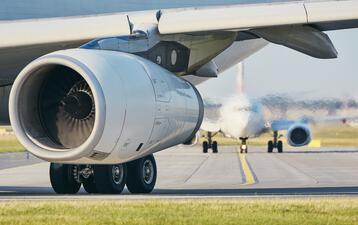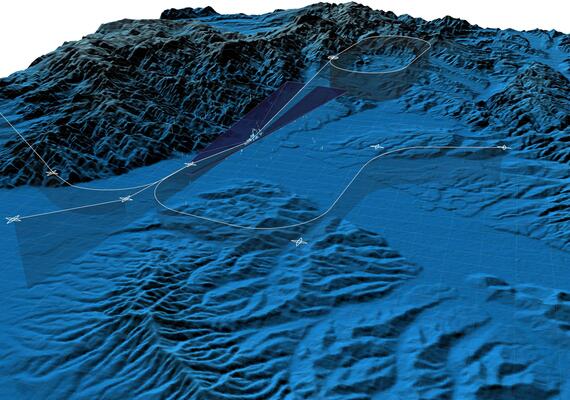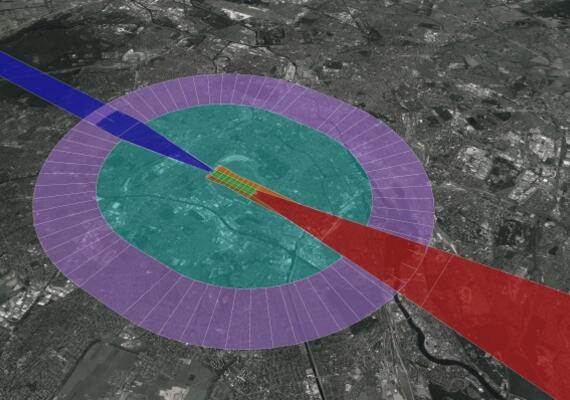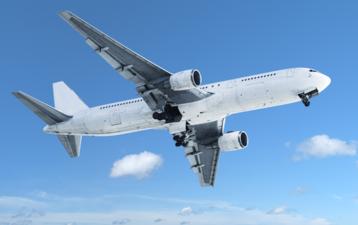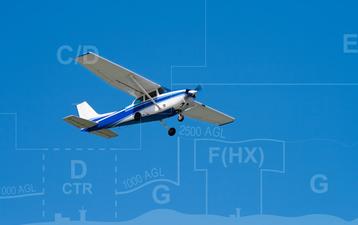PANS-OPS Flight Procedure Design
Instrument Flight Procedures (IFP) provide access to aerodromes under a wide variety of meteorological conditions and enhance safety by providing standard procedures for pilots and air traffic control. Due to evolving navigation technology, growing air traffic as well as environmental demands, instrument flight procedure design is becoming a more and more complex task.
The ICAO Document 8168 „PANS-OPS“ specifies in detailed criteria the requirements of instrument flight procedures and their protection. Hereby obstacle clearance is the primary safety consideration.
This 5-day course provides a comprehensive overview of flight procedure design and obstacle clearance criteria specified in ICAO PANS-OPS. It is designed for all persons seeking an insight into instrument flight procedure design.
Besides basic procedure design principles (e.g. navigation, fixes, protection areas and obstacle clearance), especially departure and approach procedures are covered. Procedures based on conventional navigation as well as on area navigation (RNAV) and performance-based navigation (PBN) will be catered for. An important role has the ILS precision approach, whose specialties will be shown (e.g. ILS OAS and CRM). The basic principles of flight procedure design as well as possibilities and restrictions when designing instrument flight procedures – considering the complex environment (e.g. air traffic control, airspace, navigation and noise) – will be discussed.
Attendees will learn to understand instrument flight procedures which will help them to discuss and judge on design questions.
Please note: This course can also be booked as an in-house version in German - however, the course material is only available in English.
Course Details
Location:BerlinLanguage:English
Date:06.10. - 10.10.2025
Duration:5 days
Provider:airsight GmbH
Course Fee
For courses in Berlin:
All customers will be charged 19% VAT.
The final price will be shown on your invoice.
Please note: If you want to register several particpants from your company but need a single invoice for each, please register each of them seperately.
Course Content
Basic procedure design principles
- Conventional navigation
- Area navigation (RNAV) incl. satellite-based navigation and augmentation systems (ABAS, SBAS, GBAS)
- Performance-based navigation (PBN)
- Fixes and Instrument flight segments
- "Path and Termination“ concept
- Protection areas and obstacle clearances
- Obstacle clearance altitude/height (OCA/H) and operational minima (MDA/H and DA/H)
Departure procedures
- Obstacle identification surface (OIS)
- Minimum obstacle clearance (MOC)
- Procedure design gradient (PDG)
Approach procedures
- Phase of approach procedures (intial, intermediate, final and missed approach)
- Types of approach procedures (non-precision approaches NPA, approach procedures with vertical guidance APV and precision approaches PA)
- Circling (visual manoeuvring)
- Visual segment surface (VSS)
- Conventional approaches (VOR, NDB and ILS approaches)
- ILS obstacle assessment surfaces (OAS) and collision risk model (CRM)
- PBN approaches (RNP APCH with LNAV, LNAV/VNAV and LPV as well as RNP AR APCH)
Airspace and environmental consideration
- Terminal area design practices
- Simultaneous operations on parallel or near-parallel instrument runways (SOIR)
- Environmental considerations
Trainer
Romano Germann
Romano Germann is one of the most experienced Flight Procedure Designers in Europe. He has been working as a flight procedure designer at the Swiss ANSP Skyguide for more than 15 years. He was the person of contact for instrument flight procedure issues at Zurich airport (LSZH) and was also deeply involved in PBN implementations within Switzerland.
Since 2016 he works as a freelance Flight Procedure Designer and has been active at many projects in Switzerland and at many places abroad. Romano is part of the Flight Procedure Design instruction team at the Air Navigation Institute (ANI). He has been participating as an advisor in the ICAO IFPP Helicopter Working Group since 2017 and is member of the Eurocontrol PBN Implementation Support Group as well as of the FLAG Helicopter IFR Operations Group.
Dipl.-Ing. Malte Karger
Malte is responsible for flight procedure design and obstacle assessments of airsight’s consulting division. He is also a renowned and appreciated trainer, sharing his knowledge and practical experience with other industry experts in airsight’s scheduled as well as customised in-house training courses in countries such as Germany, Greece, Switzerland and Turkey.
As an advisor of ICAO’s Instrument Flight Procedure Panel (IFPP) in the capacity of a field expert, Malte participates in the Obstacle Limitation Surfaces Task Force (OLSTF).
Malte acquired extensive experience on international projects dealing with obstacle assessments and aeronautical studies for clients such as Berlin, Dubai, Hamburg, Luxembourg, Malta, Nuremburg, Stuttgart and Warsaw Airports as well as for several smaller airfields. Furthermore, he conducted numerous flight procedure design projects (conventional and RNAV/PBN) for Airports, for Airlines (e.g. Air Austral, Air Transat) as well as for Air Navigation Service Providers such as MATS (Malta Air Traffic Services) and Romanian Air Traffic Services Administration (ROMATSA).
Target Group
- Aerodrome safety experts
- Aerodrome operations managers
- Aerodrome engineers and planners
- Air traffic control staff
- Aviation safety experts
- Civil Aviation Authorities staff
Course Location
Participants are responsible for making their own travel arrangements. The accommodation and travel costs are at the charge of the participants. Please note that airsight does not perform any travel and hotel bookings for the participants. Rooms can however be booked directly by the participants by contacting the hotel. We would like to point out that from January 2025 a City Tax of 7.5% will be imposed on overnight stays for business and professional purposes in Berlin.
The course fee includes the registration, training material and examination. For non-virtual courses, coffee breaks and business lunch are also included.
Organisational Details
The course hours are scheduled as follows:
first training day: 10:00 am - 5:00 pm
mid-training days: 9:00 am - 5:00 pm
last training day: 8:00 am - 4:00 pm
Coffee breaks and business lunch are included in the course fee. At the end of the course, all participants will receive an airsight certificate based on EASA training regulations, which is highly recognised throughout the aviation industry.
About airsight Training
airsight Training course quality
airsight operates an ISO 9001 certified Quality Management System and pursues the objective to provide high quality services that fully meet the clients’ needs.
Course Details
Location:In-houseLanguage:German / English
Duration:5 days
Provider:airsight GmbH
Course Content
Basic procedure design principles
- Conventional navigation
- Area navigation (RNAV) incl. satellite-based navigation and augmentation systems (ABAS, SBAS, GBAS)
- Performance-based navigation (PBN)
- Fixes and Instrument flight segments
- "Path and Termination“ concept
- Protection areas and obstacle clearances
- Obstacle clearance altitude/height (OCA/H) and operational minima (MDA/H and DA/H)
Departure procedures
- Obstacle identification surface (OIS)
- Minimum obstacle clearance (MOC)
- Procedure design gradient (PDG)
Approach procedures
- Phase of approach procedures (intial, intermediate, final and missed approach)
- Types of approach procedures (non-precision approaches NPA, approach procedures with vertical guidance APV and precision approaches PA)
- Circling (visual manoeuvring)
- Visual segment surface (VSS)
- Conventional approaches (VOR, NDB and ILS approaches)
- ILS obstacle assessment surfaces (OAS) and collision risk model (CRM)
- PBN approaches (RNP APCH with LNAV, LNAV/VNAV and LPV as well as RNP AR APCH)
Airspace and environmental consideration
- Terminal area design practices
- Simultaneous operations on parallel or near-parallel instrument runways (SOIR)
- Environmental considerations
Trainer
Dipl.-Ing. Malte Karger
Malte is responsible for flight procedure design and obstacle assessments of airsight’s consulting division. He is also a renowned and appreciated trainer, sharing his knowledge and practical experience with other industry experts in airsight’s scheduled as well as customised in-house training courses in countries such as Germany, Greece, Switzerland and Turkey.
As an advisor of ICAO’s Instrument Flight Procedure Panel (IFPP) in the capacity of a field expert, Malte participates in the Obstacle Limitation Surfaces Task Force (OLSTF).
Malte acquired extensive experience on international projects dealing with obstacle assessments and aeronautical studies for clients such as Berlin, Dubai, Hamburg, Luxembourg, Malta, Nuremburg, Stuttgart and Warsaw Airports as well as for several smaller airfields. Furthermore, he conducted numerous flight procedure design projects (conventional and RNAV/PBN) for Airports, for Airlines (e.g. Air Austral, Air Transat) as well as for Air Navigation Service Providers such as MATS (Malta Air Traffic Services) and Romanian Air Traffic Services Administration (ROMATSA).
Target Group
- Aerodrome safety experts
- Aerodrome operations managers
- Aerodrome engineers and planners
- Air traffic control staff
- Aviation safety experts
- Civil Aviation Authorities staff
Organisational Details
airsight offers this training course on request, worldwide. At the end of the course, all participants will receive an airsight certificate based on EASA training regulations, which is highly recognised throughout the aviation industry.
About airsight Training
airsight Training course quality
airsight operates an ISO 9001 certified Quality Management System and pursues the objective to provide high quality services that fully meet the clients’ needs.

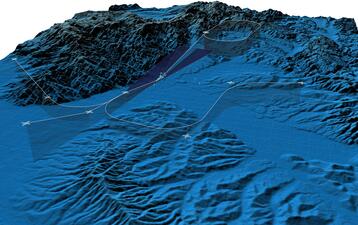
 Training 5 or more people? Ask for an In-house course at your premises or online!
Training 5 or more people? Ask for an In-house course at your premises or online!
